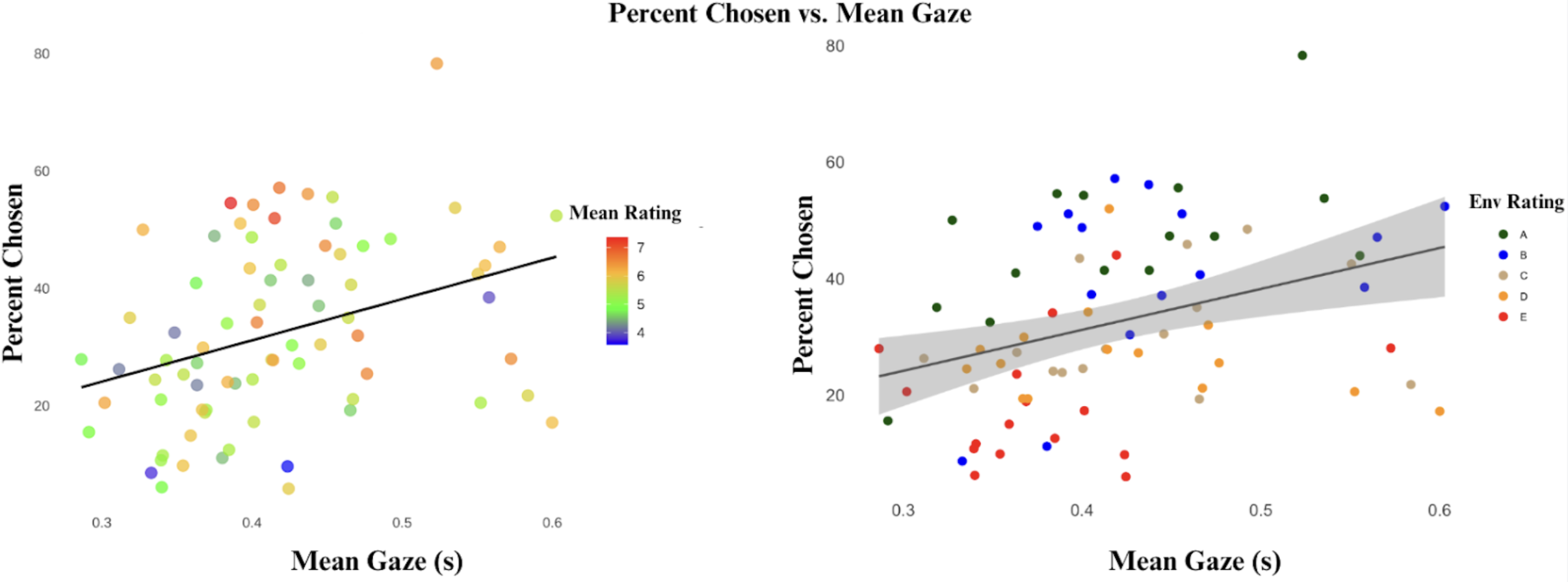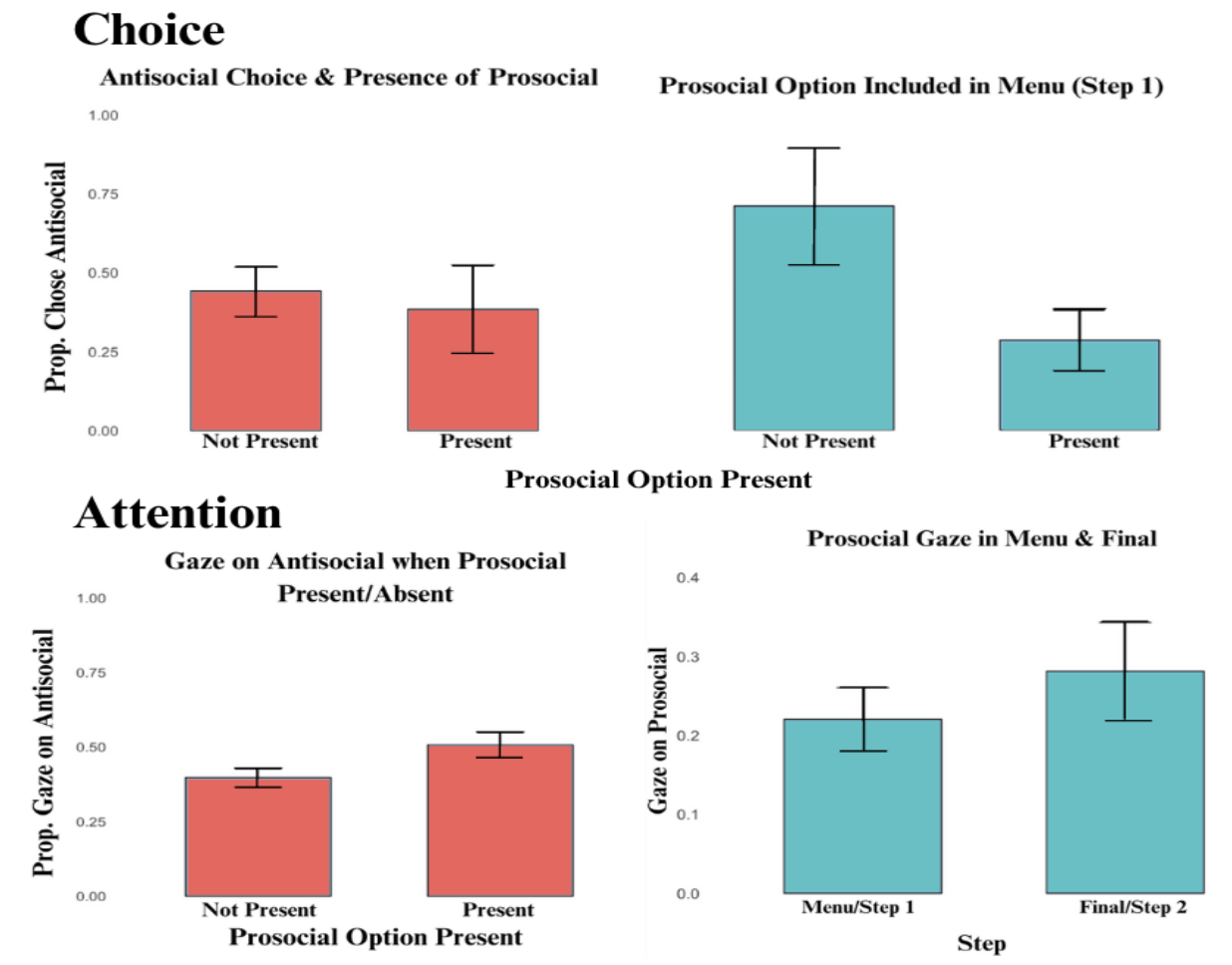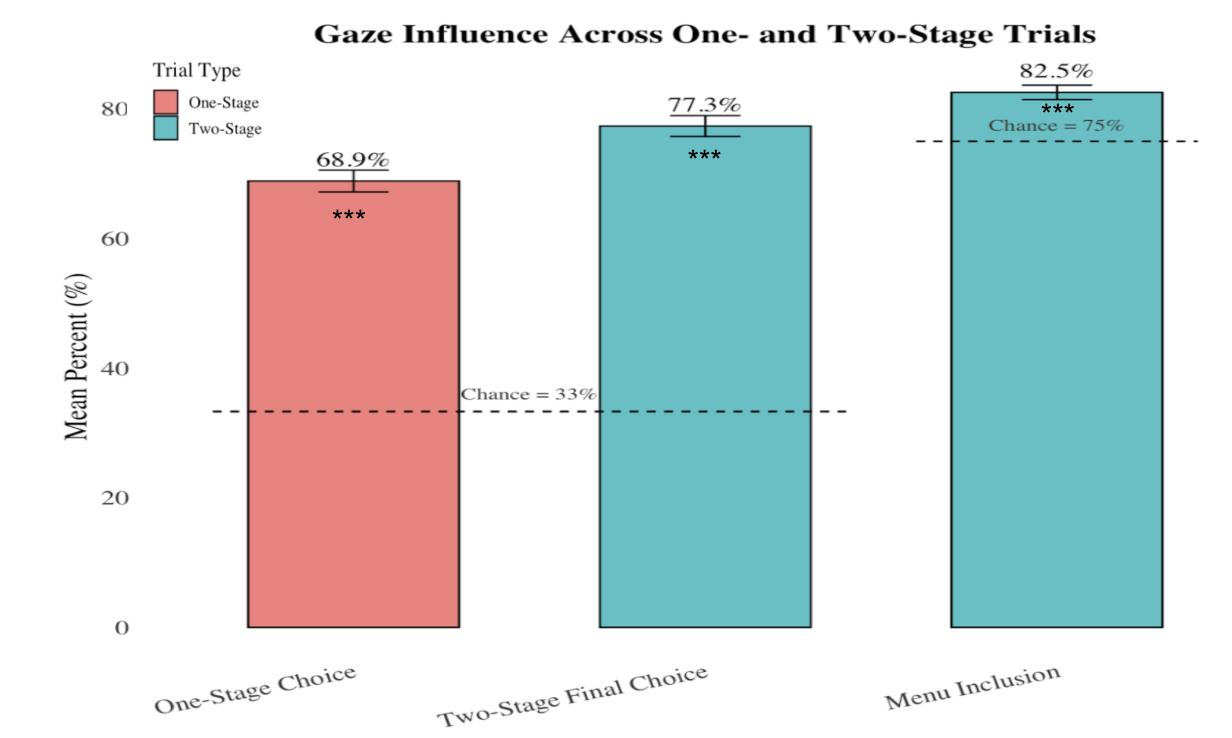This research has been presented at many poster sessions, including the 2025 Social & Affective Neuroscience Society in Chicago, IL.
Please note: these figures are **not** comprehensive. This study has not been published and is currently ongoing, so all figures and methods are not public. If you would like to view the results (and/or see a detailed methods section) as part of my portfolio, please email me.

Percent of time an item was chosen (based on how many times it was shown) as a function of mean gaze (s) for each item. The modeled linear relationship (given by the above regression) is significant (p < 0.01).


These were only a few exploratory analysis we looked at in regards to eye tracking. As mentioned, several other analyses were included in my final senior thesis. To see these analyses, please email me.